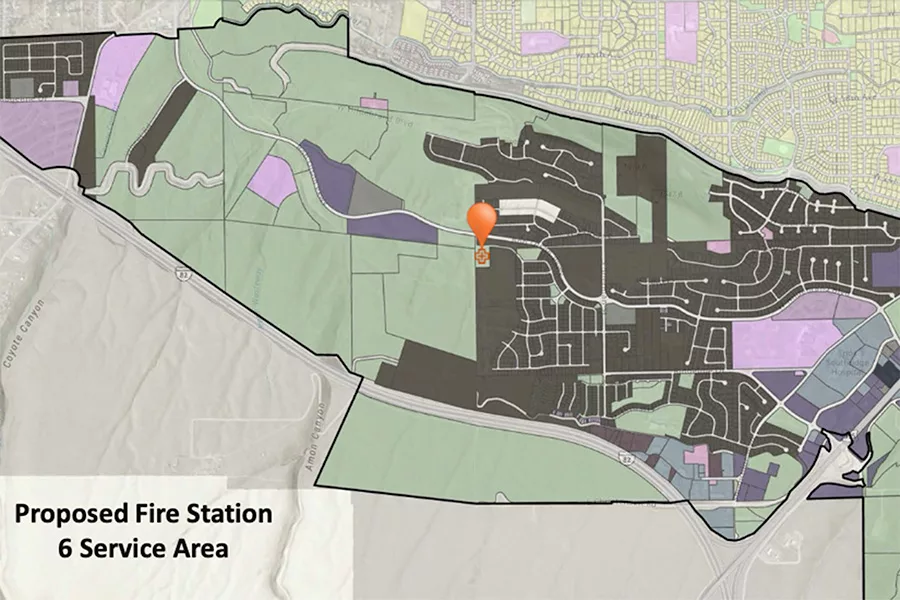
Home » Kennewick considers fire impact fees in growing Southridge area
Kennewick considers fire impact fees in growing Southridge area

The city of Kennewick plans to build a fire station to serve the growing Southridge area. Officials with the Kennewick Fire Department have proposed implementing a fire impact fee on new development in the area to finance the station’s construction.
Map courtesy Kennewick Fire DepartmentApril 14, 2025
Developers working on properties in Kennewick’s Southridge area may soon see their costs go up when requesting building permits.
The Kennewick City Council will consider a new fire impact fee as soon as its April 15 meeting following a recent workshop discussion and public hearing.
Depending on the project, the fee would add nearly $800 to the cost of building a single-family home, $50,000 for a new grocery store and more than $100,000 to the construction of a 30-bed residential care facility in the Southridge area.
Kennewick Fire Department officials and city administrators cite the growing demand for services on the south flank of Thompson Hill between Highway 395 and south of 15th Avenue to Clearwater Avenue as well as the need to build a fire station to serve it as the basis for the fee.
“Although council is still discussing the exact timing for the commencement of the Fire Station 6 construction project, it is recognized that a fire station and other capital are needed to deliver effective emergency fire and EMS response to the Southridge community,” according to a memo from city administrators. “The fire impact fee will provide significant assistance with the funding needed to better serve this growing area.”
Impact fees are one-time charges paid at the time of construction to offset the costs of municipal services of new development by providing funding for the capital improvements those developments require. Revenues from impact fees can only be used for capital construction.
The city council initially expressed an interest in the fire impact fee a year ago during a retreat, according to council documents. City leaders also have indicated an interest in applying such a fee to development citywide.
The city wants to build Fire Station 6 on Bob Olson Parkway, in the middle of the area where the impact fee would be implemented. That facility is anticipated to cost $15 million and would initially be paid for with general obligation bonds, which would then be paid off in part through fire impact fee revenues.
Fire officials based the proposed fee amounts on the projected calls for service to the different types of development expected in Southridge. Those estimates indicate one call for service for five single-family homes to one call for nearly every bed in a residential care facility.
Kennewick fire officials noted that even with the proposed fire impact fee, building costs in the Southridge area will remain lower compared to Pasco, Richland and West Richland, all while contributing to improved public safety and the protection of property.
Impact fees are not new, even in the Tri-Cities. The city of Pasco implemented a school impact fee years ago as booming residential development sent school enrollments skyrocketing, straining the capacity of schools. And the four largest cities in the region all have traffic and park impact fees already in place.
But they are often opposed by builders, who cite them as inflating the cost of construction that is then passed on to homebuyers. A recent report from the Washington Center for Housing Studies attributes a worsening housing crisis in the state because of impact fees.
“Homes are increasingly out of reach for the majority of Washingtonian families, and the burden of added costs like impact fees only deepens the affordability crisis in our state,” said Greg Lane, executive vice president of the Building Industry Association of Washington, in a statement.
Real Estate & Construction Local News
KEYWORDS April 2025
Related Articles
Related Products





